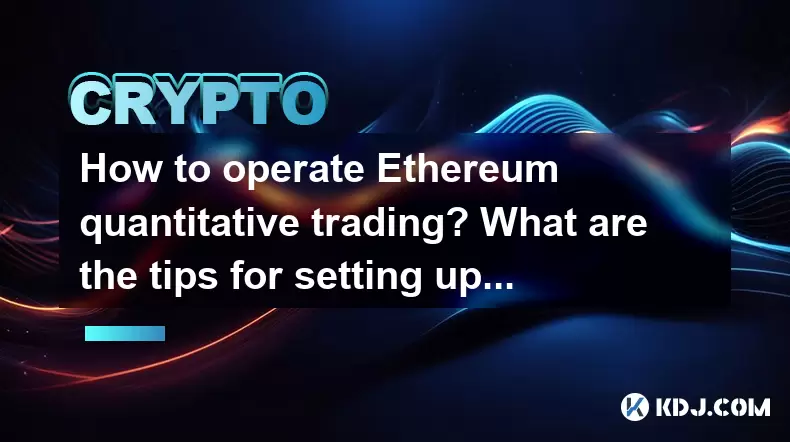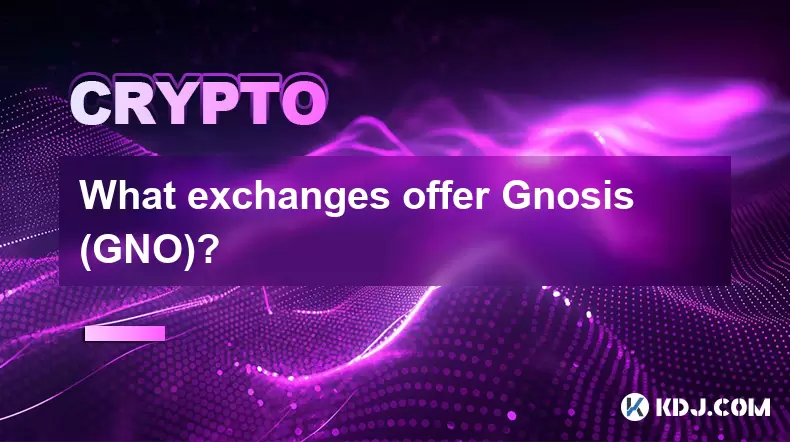-
 Bitcoin
Bitcoin $119000
-2.21% -
 Ethereum
Ethereum $4315
1.01% -
 XRP
XRP $3.151
-3.11% -
 Tether USDt
Tether USDt $0.0000
0.00% -
 BNB
BNB $808.5
-0.71% -
 Solana
Solana $175.8
-4.21% -
 USDC
USDC $0.9999
0.00% -
 Dogecoin
Dogecoin $0.2250
-3.92% -
 TRON
TRON $0.3469
1.77% -
 Cardano
Cardano $0.7818
-3.81% -
 Chainlink
Chainlink $21.47
-2.10% -
 Hyperliquid
Hyperliquid $43.30
-6.81% -
 Stellar
Stellar $0.4370
-2.84% -
 Sui
Sui $3.682
-4.40% -
 Bitcoin Cash
Bitcoin Cash $590.8
2.67% -
 Hedera
Hedera $0.2484
-5.20% -
 Ethena USDe
Ethena USDe $1.001
0.00% -
 Avalanche
Avalanche $23.10
-4.29% -
 Litecoin
Litecoin $119.2
-3.96% -
 Toncoin
Toncoin $3.409
0.90% -
 UNUS SED LEO
UNUS SED LEO $9.016
-1.29% -
 Shiba Inu
Shiba Inu $0.00001304
-3.82% -
 Uniswap
Uniswap $11.18
1.33% -
 Polkadot
Polkadot $3.913
-3.51% -
 Cronos
Cronos $0.1672
-3.08% -
 Dai
Dai $1.000
0.02% -
 Ethena
Ethena $0.7899
-4.70% -
 Bitget Token
Bitget Token $4.400
-1.23% -
 Pepe
Pepe $0.00001132
-5.93% -
 Monero
Monero $257.9
-6.44%
How to operate Ethereum quantitative trading? What are the tips for setting up automatic buying and selling?
Ethereum quantitative trading uses algorithms to trade automatically; set up a secure environment, develop a strategy, and start small while monitoring performance.
May 19, 2025 at 07:49 pm

How to Operate Ethereum Quantitative Trading? What are the Tips for Setting Up Automatic Buying and Selling?
Ethereum quantitative trading involves using algorithms and mathematical models to execute trades automatically based on predefined criteria. This method can help traders capitalize on market opportunities more efficiently than manual trading. In this article, we will explore how to operate Ethereum quantitative trading and provide tips for setting up automatic buying and selling.
Understanding Ethereum Quantitative Trading
Quantitative trading in the context of Ethereum refers to the use of computer algorithms to analyze market data and execute trades. These algorithms can process vast amounts of data quickly and can operate 24/7, which is particularly useful in the highly volatile cryptocurrency market.
To start with Ethereum quantitative trading, you need to have a basic understanding of both Ethereum and quantitative trading principles. Ethereum is a decentralized platform that runs smart contracts, and its native cryptocurrency is Ether (ETH). Quantitative trading, on the other hand, involves developing and implementing trading strategies that are based on mathematical models and statistical analysis.
Setting Up the Trading Environment
Before you can begin Ethereum quantitative trading, you need to set up your trading environment. This includes choosing the right trading platform and ensuring you have the necessary tools and infrastructure.
- Choose a reliable trading platform: Platforms like Binance, Coinbase Pro, and Kraken offer APIs that allow for algorithmic trading. Ensure the platform you choose supports the trading pairs you are interested in and has a stable API.
- Set up a development environment: You will need a programming language like Python, which is popular among quantitative traders due to its powerful libraries such as Pandas and NumPy. Install the necessary libraries and tools, such as Jupyter Notebook for coding and testing your strategies.
- Secure your trading account: Use two-factor authentication and ensure your API keys are secure. Never share your API keys and keep them encrypted.
Developing a Trading Strategy
Developing a trading strategy is a crucial step in Ethereum quantitative trading. Your strategy should be based on historical data analysis and should include clear entry and exit points.
- Analyze historical data: Use libraries like Pandas to import and analyze historical price data of Ethereum. Look for patterns and trends that can inform your trading strategy.
- Define entry and exit points: Based on your analysis, set specific conditions for when to buy and sell Ethereum. For example, you might decide to buy when the price crosses above a moving average and sell when it crosses below.
- Backtest your strategy: Use historical data to test how your strategy would have performed in the past. This can help you refine your strategy before going live.
Implementing Automatic Buying and Selling
Once you have developed your trading strategy, you need to implement it to automatically buy and sell Ethereum. This involves writing code that interacts with your chosen trading platform's API.
- Connect to the trading platform API: Use the API documentation provided by your trading platform to write code that can send buy and sell orders. Libraries like
ccxtin Python can simplify this process. - Implement the trading logic: Write code that checks the market conditions against your strategy's criteria and executes trades accordingly. For example, if your strategy is to buy when the price crosses above a moving average, your code should continuously check the current price against the moving average and place a buy order when the condition is met.
- Set up error handling and logging: Ensure your code can handle errors gracefully and log all activities for later review. This is crucial for debugging and improving your strategy over time.
Tips for Setting Up Automatic Buying and Selling
Setting up automatic buying and selling for Ethereum requires careful planning and execution. Here are some tips to help you succeed:
- Start small: Begin with small trade sizes to test your strategy in real market conditions without risking too much capital.
- Monitor and adjust: Even though your trading is automated, it's important to monitor its performance and make adjustments as needed. Market conditions can change, and your strategy may need to evolve.
- Use stop-loss orders: Implement stop-loss orders to limit potential losses. This can help protect your capital if the market moves against your position.
- Diversify your strategies: Don't rely on a single strategy. Consider running multiple strategies simultaneously to spread risk and increase the chances of success.
Ensuring Security and Compliance
Security and compliance are critical aspects of Ethereum quantitative trading. You need to ensure that your trading activities are secure and comply with relevant regulations.
- Use secure connections: Always use HTTPS when connecting to your trading platform's API to prevent data interception.
- Comply with regulations: Be aware of the regulatory environment in your jurisdiction. Some regions have strict rules about algorithmic trading and cryptocurrency trading.
- Regularly update your systems: Keep your trading software and security systems up to date to protect against vulnerabilities.
Frequently Asked Questions
Q: Can I use a pre-built trading bot for Ethereum quantitative trading?
A: Yes, there are pre-built trading bots available that can be customized for Ethereum trading. However, using a pre-built bot may limit your ability to tailor the strategy to your specific needs. It's important to thoroughly test any pre-built bot before using it with real money.
Q: How much capital do I need to start Ethereum quantitative trading?
A: The amount of capital needed can vary widely depending on your strategy and risk tolerance. Some traders start with as little as $100, while others may require thousands of dollars. It's important to start with an amount you can afford to lose.
Q: Is it possible to run Ethereum quantitative trading strategies on a cloud server?
A: Yes, many traders use cloud servers to run their trading strategies. Cloud servers can provide the necessary computing power and reliability needed for continuous trading. Services like Amazon Web Services (AWS) and Google Cloud Platform are popular choices.
Q: How often should I review and adjust my Ethereum quantitative trading strategy?
A: It's a good practice to review your strategy at least weekly, or more frequently if the market is particularly volatile. Adjustments may be needed based on performance data and changes in market conditions.
Disclaimer:info@kdj.com
The information provided is not trading advice. kdj.com does not assume any responsibility for any investments made based on the information provided in this article. Cryptocurrencies are highly volatile and it is highly recommended that you invest with caution after thorough research!
If you believe that the content used on this website infringes your copyright, please contact us immediately (info@kdj.com) and we will delete it promptly.
- Japan, Bitcoin, and Treasuries: A New Era of Corporate Finance?
- 2025-08-12 18:30:12
- Bitcoin Bull Market: Decoding the Indicators for the Next Big Move
- 2025-08-12 18:30:12
- Do Kwon's Terra Collapse: From 'Not Guilty' to Guilty Plea?
- 2025-08-12 18:50:12
- Material Efficiency, Traceability, and Trust: The New Pillars of Sustainability
- 2025-08-12 18:50:12
- Do Kwon's Potential Guilty Plea: A New Chapter in the TerraUSD Crypto Collapse Saga
- 2025-08-12 18:55:12
- Bitcoin, Holdings, and the Smarter Web: A New Era of Digital Finance
- 2025-08-12 18:55:12
Related knowledge

How to purchase Aragon (ANT)?
Aug 09,2025 at 11:56pm
Understanding Aragon (ANT) and Its PurposeAragon (ANT) is a decentralized governance token that powers the Aragon Network, a platform built on the Eth...

Where to trade Band Protocol (BAND)?
Aug 10,2025 at 11:36pm
Understanding the Role of Private Keys in Cryptocurrency WalletsIn the world of cryptocurrency, a private key is one of the most critical components o...

What is the most secure way to buy Ocean Protocol (OCEAN)?
Aug 10,2025 at 01:01pm
Understanding Ocean Protocol (OCEAN) and Its EcosystemOcean Protocol (OCEAN) is a decentralized data exchange platform built on blockchain technology,...

How to invest in Kyber Network Crystal v2 (KNC)?
Aug 12,2025 at 05:21pm
Understanding Kyber Network Crystal v2 (KNC)Kyber Network is a decentralized liquidity hub built on the Ethereum blockchain that enables instant token...

Where can I buy UMA (UMA)?
Aug 07,2025 at 06:42pm
Understanding UMA and Its Role in Decentralized FinanceUMA (Universal Market Access) is an Ethereum-based decentralized finance (DeFi) protocol design...

What exchanges offer Gnosis (GNO)?
Aug 12,2025 at 12:42pm
Overview of Gnosis (GNO) and Its Role in the Crypto EcosystemGnosis (GNO) is a decentralized prediction market platform built on the Ethereum blockcha...

How to purchase Aragon (ANT)?
Aug 09,2025 at 11:56pm
Understanding Aragon (ANT) and Its PurposeAragon (ANT) is a decentralized governance token that powers the Aragon Network, a platform built on the Eth...

Where to trade Band Protocol (BAND)?
Aug 10,2025 at 11:36pm
Understanding the Role of Private Keys in Cryptocurrency WalletsIn the world of cryptocurrency, a private key is one of the most critical components o...

What is the most secure way to buy Ocean Protocol (OCEAN)?
Aug 10,2025 at 01:01pm
Understanding Ocean Protocol (OCEAN) and Its EcosystemOcean Protocol (OCEAN) is a decentralized data exchange platform built on blockchain technology,...

How to invest in Kyber Network Crystal v2 (KNC)?
Aug 12,2025 at 05:21pm
Understanding Kyber Network Crystal v2 (KNC)Kyber Network is a decentralized liquidity hub built on the Ethereum blockchain that enables instant token...

Where can I buy UMA (UMA)?
Aug 07,2025 at 06:42pm
Understanding UMA and Its Role in Decentralized FinanceUMA (Universal Market Access) is an Ethereum-based decentralized finance (DeFi) protocol design...

What exchanges offer Gnosis (GNO)?
Aug 12,2025 at 12:42pm
Overview of Gnosis (GNO) and Its Role in the Crypto EcosystemGnosis (GNO) is a decentralized prediction market platform built on the Ethereum blockcha...
See all articles

























































































